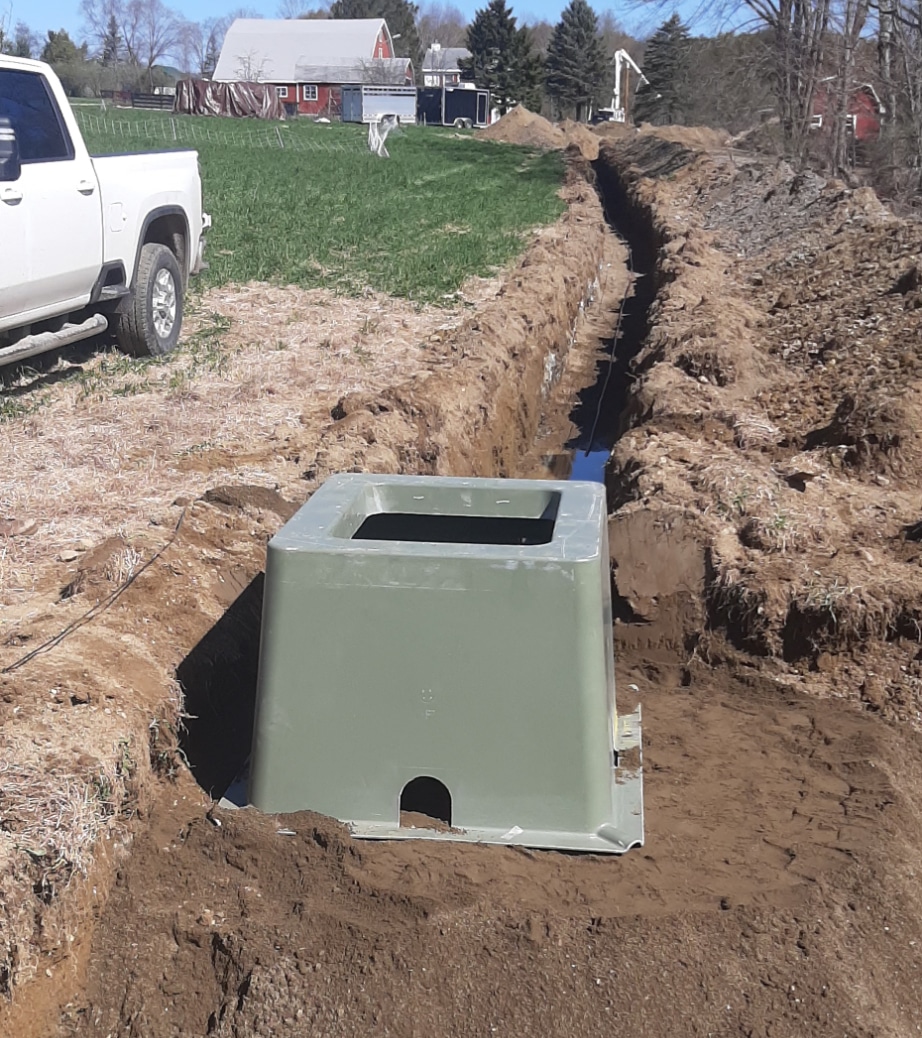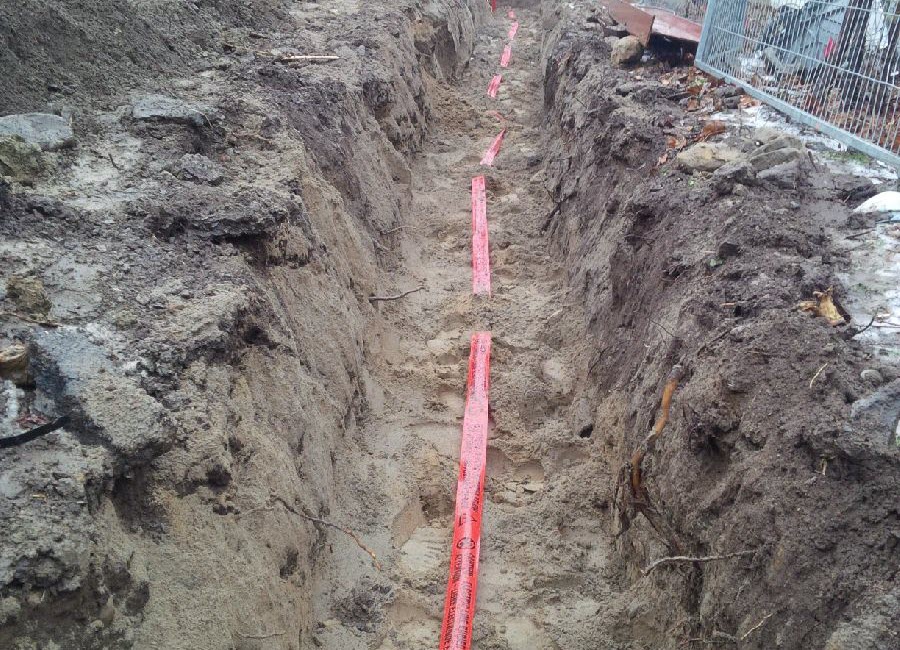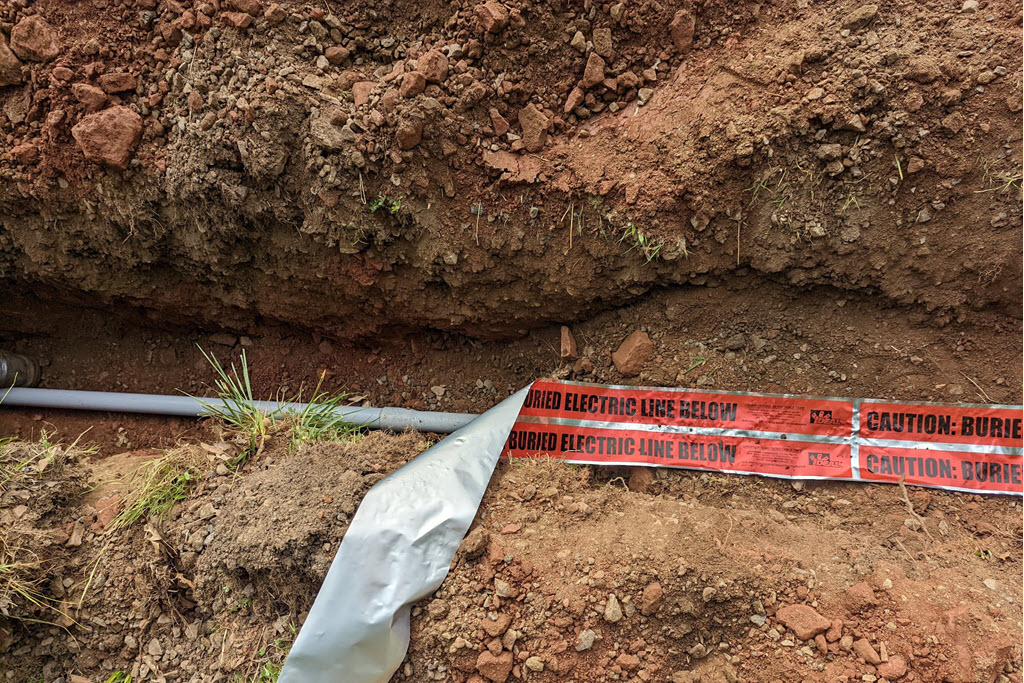Electric Line Servicesin Madison Heights MI
Service Electrical Lines Installed for Safe and Reliable Power
We Are Locally Owned & Operated For Over 37 Years
Contact Us Today!
We Serve Businesses In And Around The Following Cities:
About Electric Line Services
Introduction to Electric Line in Madison Heights
Located in the heart of the Oakland county lies Madison Heights, a city renowned for various commercial prospects. One of the key contributors to making this place a commercial hotspot is the well-laid and effective Electric Line network. Thanks to the innovative municipal plans and implementation, Madison Heights now stands as a city that provides seamless electrical connectivity to its commercial properties. But what does this elaborate network of Electric Line imply for commercial properties? What are its merits, and how does it work in real-world scenarios? Let’s dig deeper into understanding this crucial infrastructure.
Electric Line: More Than Just Wires
When discussing Electric Line in Madison Heights, we’re talking about more than just cables tethered to poles or buried underground. It’s a comprehensive system encompassing a variety of equipment, installations, and safety measures, with ground electricity playing a vital role in this dynamics. The process includes the system layout, evaluating power requirements, installation of transformers, electrical installation in commercial properties, and ensuring the line’s safety and efficiency.
The Process of Electric Line Implementation
The installation process of an Electric Line starts with the examination of the commercial property’s layout, taking note of the specific power needs of the establishment. This helps in designing a unique electrical layout that aligns perfectly with the building structure while ensuring smooth power supply. Next into the sequence is the actual electrical installation which includes setting up transformers, circuits, wiring, and the ground electricity system. All these steps are executed with precision by experienced electricians, often provided by renowned service providers like D&J Contracting. These professionals adhere to safety standards and regulations, ensuring that power distribution is safe and efficient.
Business Benefits of Electric Line
Understanding the practical utilities and business benefits of Electric Line in Madison Heights, allows us to realize its relevance beyond a mere set of electrical conductors. Firstly, an efficient electric line ensures smooth operation of all electrical devices, machinery, and systems within the commercial property, thereby supporting business operations consistently.
Secondly, safety is paramount in commercial spaces like offices, retail stores, and eateries. A well-installed electric line, focusing on all safety aspects, provides a secure environment for both employees and customers. Exceptional service providers like D&J Contracting stress on the importance of implementing comprehensive safety measures during the electrical installation process.
Lastly, the strategic integration of ground electricity results in optimized power usage, lowering energy costs for businesses over time. In real-world applications, we can observe how businesses in Madison Heights have benefitted from cost savings, improved safety, and skilled electrical installation.
Real-world Applications
The practical application of the efficient Electric Line in Madison Heights is reflected in the operational effectiveness of commercial properties across the city. Whether it be the bustling malls enjoying consistent power supply, local restaurants ensuring customers have a secure and well-lit dining experience, or modern offices running efficiently owing to a create well-structured electric line system. Each of these real-world applications stands as a testament to the thoughtfully constructed electrical network, backed by professional service providers like D&J Contracting.
Looking Ahead
Concluding, we return to the important mention of Electric Line in Madison Heights, and how it plays a pivotal role for commercial properties. Analyzing the process, benefits, and real-world applications, it’s quite evident that having a reliable electric line system is a prerequisite for any successful business. As commercial entities continue to thrive in Madison Heights, the role of proficient electrical installation and services, such as those provided by D&J Contracting, only become more valuable. With the city already flourishing in business and commercial success, the future holds limitless possibilities where efficient electric line systems will continue to power and prop up Madison Heights’ commercial growth.
Electric Line Services Gallery


Call Us Today to receive your Free Quote for
Electric Line in Madison Heights
Serving: Madison Heights, Michigan

About Madison Heights, Michigan
Originally part of Royal Oak Township, Madison Heights incorporated as a city by popular vote on January 17, 1955, and chartered on December 6 of that same year, becoming the tenth city government in southern Oakland County. At that time, the 7.2 square miles (18.6 km) city was one of the largest suburban communities in the Metro Detroit area. The first city hall was at 26305 John R Road, the former township offices. On April 5, 1963, a new municipal building was dedicated which is on the present location at 300 West Thirteen Mile Road. The city lies in the Interstate 696 (I-696) and I-75 corridor and is served by two primary school districts, Lamphere and Madison, as well as a full-service municipal government.
According to the United States Census Bureau, the city has a total area of 7.09 square miles (18.36 km), all land.
Although 91% of the buildings in Madison Heights are single-family homes or condominiums (approximately 9,800 residential property owners), 60% of the tax base is fueled by light industrial or commercial property. The city has 15 voting precincts, totaling more than 21,000 registered voters.
Madison Heights shares borders with Troy to the north, Royal Oak to the west, Hazel Park to the south, and Warren to the east. The eastern border of Madison Heights (Dequindre Road) is also the border between Oakland and Macomb counties.
There are more than 112 miles (180 km) of road within Madison Heights, of which the city maintains 105 miles (169 km), 95 miles (153 km) for snow removal, sweeping, and patching. Interstate 75 passes north to south on the west side of the city, and Interstate 696 is the major feature of its southern border. The junction of these two highways is shared with Royal Oak and Hazel Park on the southwest corner of Madison Heights.
| Census | Pop. | Note | %± |
|---|---|---|---|
| 1960 | 33,343 | — | |
| 1970 | 38,599 | 15.8% | |
| 1980 | 35,375 | −8.4% | |
| 1990 | 31,296 | −11.5% | |
| 2000 | 31,101 | −0.6% | |
| 2010 | 29,694 | −4.5% | |
| 2020 | 28,468 | −4.1% | |
| U.S. Decennial Census | |||
As of the 2020 United States census of 2020, there were 28,468 people and 13,487 households in the city. The population per square mile is 4,017.5.
The racial makeup of the city was 80.4% White, 7.8% African American, 0.2% Native American, 7.2% Asian, 0.1% Pacific Islander, 3.6% from two or more races. Hispanic or Latino residents of any race were 2.0% of the population.
There were 13,487 households, of which 14.7% spoke a language other than English at home. People under 65 years of age with a disability accounted for 11.1% of the city’s population, and 11.7% of the city’s population was living below the federal poverty line. Households without a broadband internet subscriptions made up 11.9% of the community.
16% of residents were under the age of 18; and 16.3% were 65 years of age or older. The gender makeup of the city was 49.4% male and 50.6% female.
As of the census of 2010, there were 29,694 people, 12,712 households, and 7,543 families residing in the city. The population density was 4,188.2 inhabitants per square mile (1,617.1/km). There were 13,685 housing units at an average density of 1,930.2 per square mile (745.3/km). The racial makeup of the city was 83.9% White, 6.4% African American, 0.5% Native American, 5.8% Asian, 0.1% Pacific Islander, 0.7% from other races, and 2.7% from two or more races. Hispanic or Latino residents of any race were 2.5% of the population.
There were 12,712 households, of which 27.5% had children under the age of 18 living with them, 41.0% were married couples living together, 12.9% had a female householder with no husband present, 5.4% had a male householder with no wife present, and 40.7% were non-families. 34.1% of all households were made up of individuals, and 11.8% had someone living alone who was 65 years of age or older. The average household size was 2.32 and the average family size was 3.02.
The median age in the city was 38.3 years. 20.4% of residents were under the age of 18; 8.7% were between the ages of 18 and 24; 30.4% were from 25 to 44; 26.6% were from 45 to 64; and 13.9% were 65 years of age or older. The gender makeup of the city was 49.1% male and 50.9% female.
As of the 2000 United States census, there were 31,101 people, 13,299 households, and 8,005 families residing in the city. The population density was 4,341.3 inhabitants per square mile (1,676.2/km). There were 13,623 housing units at an average density of 1,901.6 per square mile (734.2/km). The city’s racial makeup was 89.60% White, 1.82% African American, 0.44% Native American, 4.97% Asian, 0.03% Pacific Islander, 0.46% from other races, and 2.68% from two or more races. Hispanic or Latino residents of any race were 1.61% of the population.
There were 13,299 households, of which 26.9% had children under the age of 18 living with them, 45.2% were married couples living together, 10.5% had a female householder with no husband present, and 39.8% were non-families. 33.8% of all households were made up of individuals, and 12.3% had someone living alone who was 65 years of age or older. The average household size was 2.33 and the average family size was 3.02.
In the city, 22.1% of the population was under the age of 18, 8.1% was from 18 to 24, 35.4% from 25 to 44, 20.2% from 45 to 64, and 14.2% was 65 years of age or older. The median age was 36 years. For every 100 females, there were 95.8 males. For every 100 females age 18 and over, there were 92.9 males.
The city’s median household income was $42,326, and the median family income was $51,364. Males had a median income of $41,478 versus $29,345 for females. The city’s per capita income was $21,429. About 7.0% of families and 8.9% of the population were below the poverty line, including 10.8% of those under age 18 and 13.0% of those age 65 or over.
In 2008, 1.9% of the Madison Heights population were of Vietnamese descent. 168 Asian Mart, a 38,000-square-foot (3,500 m) supermarket, is the largest Asian supermarket in southeast Michigan, and one of the largest in the state. The Chinese Cultural Center is in Madison Heights.
The mayor of Madison Heights is Roslyn Grafstein, who was appointed as Mayor in August 2020 to fill a vacant seat.
Madison District Public Schools and Lamphere Public Schools have public schools serving Madison Heights.
Bishop Foley Catholic High School is a private school.
Four Corners Montessori Academy is a public charter school.
Call Us Today to receive your Free Quote for
Electric Line in Madison Heights
Related Services in Madison Heights, Michigan
We Serve Businesses In The Following Zip Codes:
48007, 48015, 48021, 48026, 48035, 48036, 48038, 48042, 48043, 48044, 48045, 48046, 48047, 48048, 48050, 48051, 48066, 48071, 48080, 48081, 48082, 48083, 48084, 48085, 48088, 48089, 48090, 48091, 48092, 48093, 48098, 48099, 48225, 48230, 48236, 48310, 48311, 48312, 48313, 48314, 48315, 48316, 48317, 48318, 48397